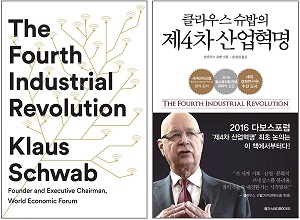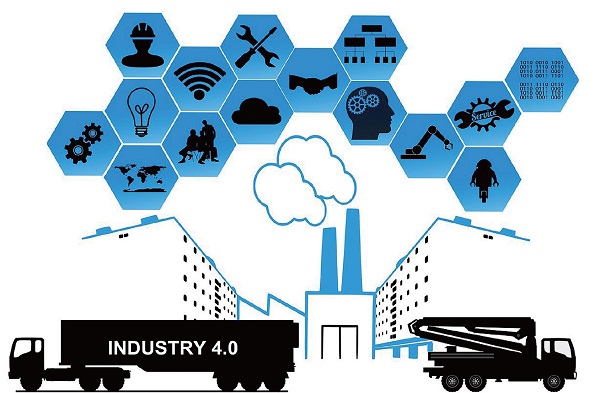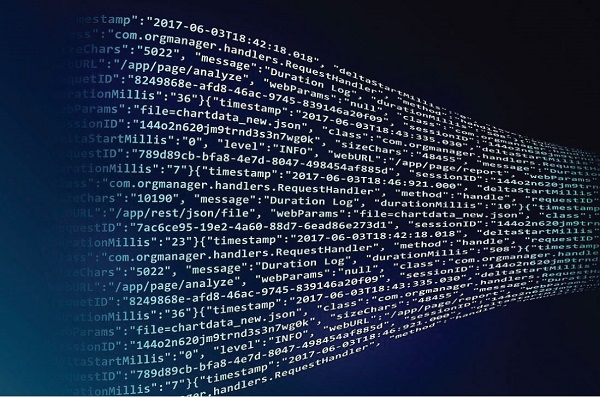Global Water Issue
“물 분야 효율성·지속가능성 위해 디지털화해야”
상하수도, 타 산업 대비 디지털 전환 더뎌…자율 상하수 처리 인프라 필요
디지털 전환 시 운영 프로세스 개선·비용 절감 가능…데이터 축적 선행돼야
보수적인 기업문화 등이 혁신기술·새로운 사업관행 가로막고 있어 개선 시급
디지털화의 불가피성
The Inevitability Of Digitalization
물 분야 디지털 전환은 다른 산업에 비해 뒤처져 있지만 결국엔 이뤄질 것이고, 그렇게 되면 우리 삶에 엄청난 혜택과 기회를 가져다 줄 것이다. 모두가 알다시피 미래를 예측할 수 없지만 과거와 현재의 사건과 동향을 바탕으로 가능성 있는 시나리오를 구상할 수 있다. 또한 이러한 시나리오를 통해 앞으로 나아갈 길을 상상해 볼 수 있다. 미래 상하수도 분야에서는 물의 가치, 데이터 기반 의사결정, 분석 정보 운용, 에너지 효율 등이 중요시될 것이다. 지난 1월 13일자 『Water Innovations』 1월호에 실린 ‘The Inevitability Of Digitalization’ 기사에 이러한 내용이 소개됐다. 그 내용을 번역했다.

인더스트리 4.0
Industry 4.0

‘인더스트리 4.0’이라고도 불리는 이 혁명은 계속해서 증가하는 데이터에 소형 마이크로 전자 기계(또는 나노-) 센서, 고성능 무선 통신 네트워크, 확장된 자동화, 자체 최적화 및 자가진단이 가능한 ‘스마트’ 머신 등을 결합해 제조 혁신을 위한 스마트 플랫폼을 만든다. 주요 설계 구성요소는 상호 연관성, 정보 투명성, 분산된 의사결정 및 의사결정 시 운영자와 경영자에 대한 정보지원이다.
Klaus Schwab, founder and executive chair of the World Economic Forum, identified the next industrial revolution in his 2016 book, The Fourth Industrial Revolution. Schwab rationalizes that this next transformation is different in scope, scale, and complexity from previous major industrial shifts.
Also labeled Industry 4.0, this revolution melds smart platforms for manufacturing with widespread deployment of miniature microelectromechanical(and nano-) sensors, superior wireless communication networks, expanded automation, “smart” machines that can self-optimize and self-diagnose, as well as data, data, data. Key design elements are interconnection, information transparency, decentralized decisions, and information assistance to operators and management in decision-making.
진화의 흐름 속에서 상하수도 부문의 위치는?
Where Is The Water And Wastewater Sector In This Evolution?
상하수도 부문은 디지털 운영 활용 면에서 타 산업 부문에 비해 뒤처져 있다. 일례로 자율주행 전기차가 뉴스에 오르면서 무인자동차 개발에 상당한 투자가 이뤄지고 있다. 이처럼 상하수도 부문에서도 숙련된 사업자가 관리하고 컴퓨터와 로봇이 암기작업을 수행하는 자율 상·하수 처리 시스템을 설계해 구축하면 어떨까?
상하수도 시설에 디지털 기술을 도입해 구현하는 것이 새로운 일은 아니지만, 우리의 삶과 일에 디지털 기술을 통합하는 것은 정교하고 복잡하여 마침내 우리 주변의 세상을 변화시킨다. 가치 창출의 모든 단계는 디지털 전환의 영향을 받는다. 개인적인 견해로는 상하수도 부문이 완전한 디지털 운영을 받아들이는 데 있어 다른 산업 부문보다 뒤처져 있다고 생각한다.
From my perspective, the sector is behind other industries in uptake of purely digital operations. Autonomous electric cars are in the news and significant resources are flowing into developing driverless cars. Why not design and build autonomous water and wastewater treatment systems that are managed by skilled operators, but where the rote work is carried out by computers and robots?
While digital technologies and their implementation are not new to water and wastewater facilities, their integration into our lives and work is sophisticated and complex, resulting in a transformed world around us. Every stage in the value creation is impacted by the shift toward a digital world. I believe the water and wastewater sectors lag other industrial sectors in adoption of a purely digital operation.
우리는 지금 어디쯤 있는가?
Where Are We Now?
미국에서는 5만4천 개 이상의 조직이 상·하수 처리에 관여하고 있다. 이들은 공급과 수요, 지리, 자연환경으로 배출에 관한 관할권 제한 등 각 부문별 고유 과제를 가지고 있지만, 물리·화학 및 생물학의 기본 원리는 여전히 적용된다. 일련의 처리 프로세스와 시스템은 일반적이고, 혁신은 점진적으로 진행되어 왔다. 지난 50년 동안 가장 큰 발명은 막(membranes)이었다.
어떤 종류의 물이라도 처리하려면 에너지가 필요하다. 상·하수 처리에 연간 총 30TW/h의 전력이 필요하며, 이는 운영비용의 25〜40%를 차지한다. 전기 에너지원은 발자국(footprint)에 영향을 미친다. 장비의 성능을 최적화하면 에너지 효율이 높아지고 운영비용은 절감되지만 데이터를 모니터링하고 수집해야 한다. 에너지 사용 포트폴리오는 신재생에너지로 전환되고 있다. 영국의 물산업은 2030년까지 탄소 배출을 제로(0)화하기 위한 야심찬 목표를 세웠다. 효율성의 달성 여부를 알기 위해서는 에너지 소비를 모니터링 해야 한다.
건강한 인구와 건강한 환경을 위해서는 상·하수 처리를 지원하는 필수 인프라가 필요하다. 경제의 건전성을 보장하기 위해서도 이러한 물 서비스는 필수적이다. 그러나 수도 당국과 위생 당국은 유지관리에 어려움을 겪고 있다. 현재 유지관리 관련 작업 상당수가 지연되고 있다. 레거시(Legacy) 수집 및 유통 네트워크는 수명이 다하여 복구·재구축을 위한 자본이 필요하다. 주어진 복잡한 환경에서 상하수도를 어떻게 바꿀지를 다시 생각해 보면 해결책이 나온다.
Across the U.S., more than 54,000 organizations are involved in treating water and wastewater. Each water authority has unique challenges in terms of supply, demand, geography, and jurisdictional restrictions on discharge into the natural environment, yet the basic principles of physics, chemistry, and biology still apply. The set of treatment processes and systems are common, and innovation has been incremental. The biggest invention in the last 50 years has been membranes.
Treating water of any kind requires energy. Annually, a total of 30 terawatt-hours of electricity is required to process water and wastewater, representing between 25 to 40 percent of operating costs for operators. The source of the electricity has implications footprint. Optimizing the performance of the equipment leads to energy efficiency and reduction in operating costs, but you need to monitor and collect the data. The portfolio of energy use is shifting toward renewables. The UK water industry has set an ambitious target for net-zero carbon emissions by 2030. Monitoring energy consumption will be required to know that efficiencies have been achieved.
A healthy population and a healthy environment require essential infrastructure to support water and wastewater treatment. To ensure a healthy economy, these vital water services are required. Yet water authorities and sanitation districts struggle to keep up with maintenance - much of it deferred. Legacy collection and distribution networks are at the end of their life, requiring capital to retrofit or rebuild. Rethinking how to move water and wastewater in a congested built environment could lead to unique solutions.

디지털 전환 이니셔티브
Digital Transformation Initiative
다보스포럼을 주최하는 세계경제포럼(WEF)은 기업과 사회의 디지털화로 발생하는 새로운 기회와 테마에 초점을 맞추기 위해 디지털 전환 이니셔티브(Digital Transformation Initiative, 이하 DTI)를 발표했다. 이니셔티브 개요에 따르면, 디지털 전환은 향후 10년 동안 기업과 사회에 약 100조 달러의 경제적 효과를 불러올 수 있다.
DTI는 “첨단기술 비용 하락이 디지털 혁명의 결정적인 특징이며, 혁신을 가속화하는 데 중요한 역할을 한다”고 밝혔다. 현재 80억 개에 달하는 장치가 인터넷에 연결되어 있고 이는 2030년이 되면 1조 개 가까이 늘어날 것으로 예측된다. 물 센서 네트워크도 여기에 포함될 것이다. 한 회계법인이 DTI에 보고한 바에 따르면, 광공업과 금속산업의 경우 연구기간 동안 디지털 시장 선발주자(기업)는 후발주자에 비해 70〜200%가량 개선된 수익(EBITDA, 즉 이자 및 세전 이익, 세금, 감가상각 및 할부 상환으로 측정됨)을 거뒀다. 앞으로는 디지털 전환을 채택한 기업만이 경쟁시장에서 살아남을 수 있다.
상하수도 분야도 이와 유사하다. 일선 직원과의 상호작용은 모바일 장치를 사용해 작업, 재료 조회, 유량, 유지관리 절차 및 기타 환경 관련 데이터에 대한 최신 정보를 수집해 작업을 지원하는 방향으로 변화하고 있다. 유지관리는 사후 대응이 아닌 예측을 위한 것이며, 비용을 줄이고, 인력 수요를 감소시키며, 작업이 필요한 시기와 장소를 알아보기 위한 것이다. 수리를 위한 정보 및 부품은 부품 고장 전에 전달된다. 회전기계(rotating machines)를 감지하는 장치는 고장이 임박했을 때 운영자에게 성능 특성의 변화를 알리도록 훈련된다.
The World Economic Forum that hosts the famous Davos confab organized a Digital Transformation Initiative (DTI) a few years back “to serve as the focal point for new opportunities and themes arising from the latest development in the digitalization of business and society.” According to the executive summary, the digital transformation would unlock $100 trillion for business and society over the next decade.
The DTI recognized that “the falling cost of advanced technologies is a defining characteristic of the digital revolution. It is playing a major role in accelerating innovation.” Eight billion devices are connected to the internet; by 2030, the forecast is that number will grow to 1 trillion devices. Water sensor networks will be in that mix.
An accounting firm reported in the DTI that, for the mining and metals industry, digital first movers exhibited improved earnings of 70 to 200 percent (as measured as EBITDA, or Earnings Before Interest, Taxes, Depreciation, and Amortization) over the digital laggards during the study period. The adopters will survive in competitive markets.
There are parallels with the water and wastewater sector. Interactions with frontline employees are shifting toward using mobile devices to garner the latest information on operations, material lookups, flow rates, maintenance procedures, and other environmental data to support their tasks. Maintenance will be predictive, not reactive, reducing costs, lowering workforce requirements, and identifying when and where work is needed. Information and parts to repair assemblies will be delivered prior to the part failure. Devices that listen to the rotating machines can be trained to alert staff of shifts in performance characteristics that indicate imminent failure.
디지털 전환의 결과
Outcomes Of Digital Transformation
DTI 분석의 결과 중 하나는 차세대 분석 및 의사결정 지원 도구의 필요성이다. 모든 스트리밍 데이터를 상황에 맞게 배치하려면 프레임워크(framework) 또는 아키텍쳐(Architecture)가 필요하며, 이는 프로세스 및 시스템에 대한 이해와 인프라 임무 수행에 필수적인 통찰력을 제공한다. 데이터 분석을 통해 클라우드에 수집, 암호화 및 저장된 데이터를 해석할 수 있다.
대부분의 처리 프로세스에 대한 기본 알고리즘은 확립되었다. 수치 시뮬레이션(Numerical simulation)은 작업자가 직면한 문제에 대한 결과를 제공하고 진행할 수 있는 옵션을 알려준다. 동일한 시뮬레이션 도구 세트를 사용해 리모델링, 개조, 용량 확장도 가능하다. 제조사 규격을 현장 운영 장비와 비교할 수 있다. 보다 긴밀한 협업을 통해 제공되는 제품과 서비스의 우수한 품질로 보다 안전한 작업장이 형성될 수 있다. 그러나 이러한 미래를 위해서는 데이터가 요구된다.
물연구재단(WRF)은 2020년 ‘스마트 유틸리티의 정의 - 디지털 유틸리티가 되는 방법 및 지능형 물시스템을 위한 프레임워크’라는 연구를 지원함으로써 수도시설 변화를 위한 프레임워크의 필요성을 인식했다. 연구 수행 후 밝힌 보도자료에는 “수도시설에서 사용할 수 있는 기술과 데이터 플랫폼은 다양한 비즈니스 프로세스에 걸쳐 수많은 이점을 창출한다. 상수도관리, 수처리, 물 분배, 고객 참여, 잠재 고객, 하수 수집, 하수 재이용 및 유역 보호는 모두 디지털 인프라 및 개념의 이점을 얻을 수 있는 상·하수 유틸리티의 구성요소”라고 나와 있다.
One of the outcomes of the DTI analysis was the need for next-generation analytics and decision support tools. A framework or architecture is needed to place all the streaming data in context, providing understanding of the processes and systems along with insight to make mission-critical decisions on crucial infrastructure. Data analytics allows interpretation of robust data collected, encrypted, and stored on the cloud. Fundamental algorithms for most treatment processes have been established. Numerical simulation offers results to problems encountered by operators and informs them of options to proceed. The same set of simulation tools can be used to remodel, refurbish, or extend capacity. Manufacturers’ specifications can be compared with field operating equipment. A closer collaboration will yield a better, safer workplace with superior quality in the products and services provided. But data are required for this future.
The Water Research Foundation recognized the need for such a framework for transformation of water utilities by awarding a study in 2020 titled “Definition of a Smart Utility - How to Be a Digital Utility and the Framework for an Intelligent Water System.” The awardee’s press release stated that “The technologies and data platforms available to water utilities create countless benefits across various business processes. Water supply management, water treatment, water distribution, customer engagement, internal customers, wastewater collection, wastewater reclamation, and watershed protection are all components of water and wastewater utilities that can reap the benefits of digital infrastructure and concepts.”

결론
Conclusion
우리는 사물이 디지털화되고 있음을 인지하고 있지만 심리적으로는 전환에 대한 저항이 있다. 상하수도 분야의 경우 일반적으로 기관 전반에 걸쳐 기술 채택률이 낮다. 공중 보건 문제, 규제 동인, 보수적인 기관 문화 등이 혁신기술, 새로운 사업관행, 그리고 새로운 수익모델 활용을 가로막고 있다.
대기업이 신기술에 투자하는 주된 동력은 새로운 효율성이다. 이러한 기술을 사용하여 기존 사업 프로세스를 개선하고 자산과 자원을 최적화함으로써 비용을 절감하고 지속가능성을 높일 수 있다.
We may know that things are going digital, yet there is resistance to change in our institutions and in one’s own psychology. For the water and wastewater sector, in general, there are low technology adoption rates across agencies. Public health concerns, regulatory drivers, and conservative agency cultures prevent uptake of innovative technologies, newfangled business practices, or novel business revenue models.
The primary driver for large companies to invest in new technologies is new efficiencies. There is opportunity for them to use these technologies to improve existing business processes and optimize assets and resources, thereby reducing their costs and enabling savings for their customers and, hopefully, sustainability.

■ 필자 소개
해양학자 앤서니 존스(Anthony T. Jones) 박사는 2019년 워터하운드 퓨쳐스(Waterhound Futures)를 공동 설립해 수도관에서 배출되는 유출물을 예측하기 위해 상하수도 처리 과정의 데이터를 공략했다. 예측 모델을 통해 회원들에게 플랜트 성능을 최적화하고 규제 준수를 지원하며 담수 오염을 줄일 수 있는 통찰력을 제고한다. 존스 박사는 하와이대학교에서 해양학 박사 학위를 받았으며 해양 지질학, 해양 생물학, 해양학 분야 다수의 서적을 출판했다. 그는 담수화 분야에서 폭넓은 국제 경험을 갖고 있다.
[문의 = Tony.jones@waterhoundfutures.com]
[출처 = Wateronline(https://www.wateronline.com/doc/the-inevitability-of-digitalization-0001) / 2021년 1월 13일]
[『워터저널』 2021년 2월호에 게재]

